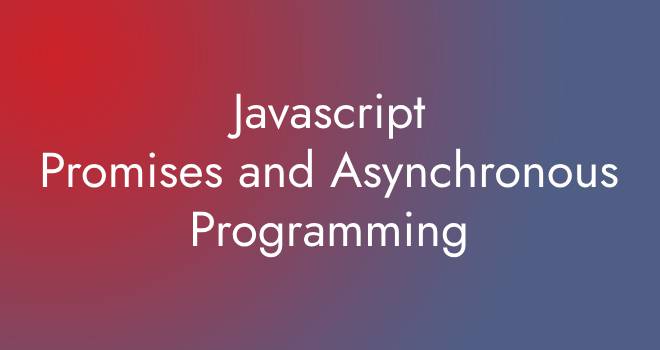Promises and asynchronous programming are concepts in computer programming, particularly in languages like JavaScript, that deal with managing tasks that don’t happen immediately or synchronously. They are used to handle operations that might take time, such as fetching data from a server, reading/writing files, or making API requests.
Asynchronous Programming:
Asynchronous programming refers to the practice of writing code in a way that allows the program to continue executing other tasks while waiting for a particular operation to complete. This is especially important when dealing with operations that can take a significant amount of time, like network requests or file I/O. Instead of blocking the entire program while waiting for a single task to finish, asynchronous programming allows the program to remain responsive and continue processing other tasks.
Callbacks and Callback Hell:
In JavaScript, callbacks are functions that are passed as arguments to other functions. They are often used to handle asynchronous operations, like fetching data from a server or reading files. Callbacks are executed when an asynchronous operation completes. While callbacks can work well for simple cases, they can lead to readability and maintainability issues when dealing with complex or nested asynchronous operations.
Callback hell is a term used to describe the situation where multiple nested callbacks are used, creating deeply nested and hard-to-follow code. This can make code difficult to read, debug, and maintain. For example:
getData(function(data) {
getMoreData(data, function(moreData) {
getEvenMoreData(moreData, function(evenMoreData) {
// And it continues...
});
});
});Promises:
A Promise is an object that represents the eventual completion or failure of an asynchronous operation and its resulting value. Promises provide a more structured and organized way to work with asynchronous code compared to traditional callback-based approaches.
Promises have three states:
Pending: The initial state, representing that the operation hasn’t completed yet.
Fulfilled: The operation completed successfully, and a result value is available.
Rejected: The operation encountered an error, and an error reason is available.
Promises are created using the Promise constructor and are typically used with asynchronous functions that return a promise. Here’s a simple example using JavaScript:
const fetchData = new Promise((resolve, reject) => {
// Simulate an asynchronous operation
setTimeout(() => {
const data = { some: 'data' };
// Resolve the promise with the data
resolve(data);
// or reject with an error
// reject(new Error('Something went wrong'));
}, 1000);
});
// Using the Promise
fetchData.then(data => {
console.log(data); // Process the data
}).catch(error => {
console.error(error); // Handle errors
});Chaining Asynchronous Operations with Promises:
One of the powerful features of promises is the ability to chain multiple asynchronous operations together in a more readable and linear way:
fetchData()
.then(result => {
return processResult(result);
})
.then(processedResult => {
return anotherAsyncOperation(processedResult);
})
.then(finalResult => {
// Handle final result
})
.catch(error => {
// Handle any error in the chain
});This approach allows you to avoid deeply nested callbacks and helps make your code more readable.
You can also discover a lot about Javascript by exploring different topics.
Note: We welcome your feedback at Easy coding School. Please don’t hesitate to share your suggestions or any issues you might have with the article!

